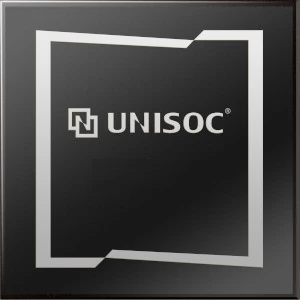MediaTek Dimensity 800U vs Unisoc Tiger T710
The Unisoc Tiger T710 and the MediaTek Dimensity 800U are both processors that offer impressive specifications. Let's compare them based on their specifications.
Starting with the Unisoc Tiger T710, it features a total of 8 CPU cores. These cores consist of four Cortex-A75 cores clocked at 1.8 GHz and four Cortex-A55 cores also clocked at 1.8 GHz. The processor is built on a 12 nm lithography process, which ensures efficient power consumption and heat management. Additionally, it is equipped with dual neural processing units (NPUs), enhancing its performance in artificial intelligence tasks.
On the other hand, the MediaTek Dimensity 800U also boasts 8 CPU cores. This processor is composed of two Cortex-A76 cores clocked at 2.4 GHz and six Cortex-A55 cores clocked at 2.0 GHz. With a 7 nm lithography process, it offers improved efficiency and higher performance compared to the Unisoc Tiger T710. It also includes an NPU for enhanced neural processing capabilities.
Both processors are based on the ARMv8.2-A instruction set, providing compatibility with a wide range of software and applications. However, the MediaTek Dimensity 800U's more advanced lithography process may give it a slight edge in terms of power efficiency and overall performance.
When considering these specifications, it is important to note that the performance of a processor is not solely determined by its specifications. Factors such as software optimization and overall system integration also play a significant role. So, it is advisable to consider real-world performance tests and user reviews before making a final decision.
In conclusion, while the Unisoc Tiger T710 and the MediaTek Dimensity 800U are both formidable processors, the Dimensity 800U's more advanced lithography process and slightly higher clock speeds may give it a slight advantage in terms of power efficiency and performance. However, it is crucial to thoroughly evaluate all the factors at play before making a decision.
Starting with the Unisoc Tiger T710, it features a total of 8 CPU cores. These cores consist of four Cortex-A75 cores clocked at 1.8 GHz and four Cortex-A55 cores also clocked at 1.8 GHz. The processor is built on a 12 nm lithography process, which ensures efficient power consumption and heat management. Additionally, it is equipped with dual neural processing units (NPUs), enhancing its performance in artificial intelligence tasks.
On the other hand, the MediaTek Dimensity 800U also boasts 8 CPU cores. This processor is composed of two Cortex-A76 cores clocked at 2.4 GHz and six Cortex-A55 cores clocked at 2.0 GHz. With a 7 nm lithography process, it offers improved efficiency and higher performance compared to the Unisoc Tiger T710. It also includes an NPU for enhanced neural processing capabilities.
Both processors are based on the ARMv8.2-A instruction set, providing compatibility with a wide range of software and applications. However, the MediaTek Dimensity 800U's more advanced lithography process may give it a slight edge in terms of power efficiency and overall performance.
When considering these specifications, it is important to note that the performance of a processor is not solely determined by its specifications. Factors such as software optimization and overall system integration also play a significant role. So, it is advisable to consider real-world performance tests and user reviews before making a final decision.
In conclusion, while the Unisoc Tiger T710 and the MediaTek Dimensity 800U are both formidable processors, the Dimensity 800U's more advanced lithography process and slightly higher clock speeds may give it a slight advantage in terms of power efficiency and performance. However, it is crucial to thoroughly evaluate all the factors at play before making a decision.
AnTuTu 10
Total Score
GeekBench 6 Single-Core
Score
GeekBench 6 Multi-Core
Score
CPU cores and architecture
| Architecture | 2x 2.4 GHz – Cortex-A76 6x 2.0 GHz – Cortex-A55 |
4x 1.8 GHz – Cortex-A75 4x 1.8 GHz – Cortex-A55 |
| Number of cores | 8 | 8 |
| Instruction Set | ARMv8.2-A | ARMv8.2-A |
| Lithography | 7 nm | 12 nm |
| Neural Processing | NPU | Dual NPU |
Memory (RAM)
| Max amount | up to 12 GB | up to 8 GB |
| Memory type | LPDDR4X | LPDDR4X |
| Memory frequency | 2133 MHz | 1866 MHz |
| Memory-bus | 2x16 bit |
Storage
| Storage specification | UFS 2.2 | UFS 2.1 |
Graphics
| GPU name | Mali-G57 MP3 | Imagination PowerVR GM9446 |
| GPU Architecture | Mali Valhall | PowerVR Rogue |
| GPU frequency | 850 MHz | 800 MHz |
| Execution units | 3 | |
| Shaders | 48 | |
| DirectX | 12 | |
| OpenCL API | 2.1 | 4.0 |
| OpenGL API | ES 3.2 | ES 3.2 |
| Vulkan API | 1.2 | 1.1 |
Camera, Video, Display
| Max screen resolution | 2520x1080@120Hz | |
| Max camera resolution | 1x 64MP, 1x 20MP + 1x 16MP | 1x 24MP |
| Max Video Capture | 4K@30FPS | 4K@30fps |
| Video codec support | H.264 (AVC) H.265 (HEVC) VP9 |
H.264 (AVC) H.265 (HEVC) VP8 VP9 |
Wireless
| 4G network | Yes | Yes |
| 5G network | Yes | Yes |
| Peak Download Speed | 2.77 Gbps | 0.3 Gbps |
| Peak Upload Speed | 1.2 Gbps | 0.1 Gbps |
| Wi-Fi | 5 (802.11ac) | 5 (802.11ac) |
| Bluetooth | 5.1 | 5.0 |
| Satellite navigation | BeiDou GPS Galileo GLONASS QZSS |
BeiDou GPS Galileo GLONASS |
Supplemental Information
| Launch Date | 2020 Quarter 3 | 2019 |
| Partnumber | MT6853V, MT6853V/TNZA, MT6853/TNZA, MT6853T | T710 |
| Vertical Segment | Mobiles | Mobiles |
| Positioning | Mid-end | Mid-end |
Popular comparisons:
1
HiSilicon Kirin 935 vs Unisoc Tiger T615
2
Qualcomm Snapdragon 710 vs MediaTek Dimensity 1050
3
Qualcomm Snapdragon 6 Gen 3 vs Qualcomm Snapdragon 636
4
Qualcomm Snapdragon 821 vs MediaTek Helio G88
5
HiSilicon Kirin 950 vs HiSilicon Kirin 8020
6
MediaTek Helio P90 vs MediaTek Dimensity 1000
7
MediaTek Dimensity 7200 Ultra vs MediaTek Dimensity 8350
8
Samsung Exynos 850 vs Samsung Exynos 1280
9
HiSilicon Kirin 9000E 5G vs MediaTek Dimensity 1080
10
MediaTek Dimensity 9000 Plus vs Qualcomm Snapdragon 665

